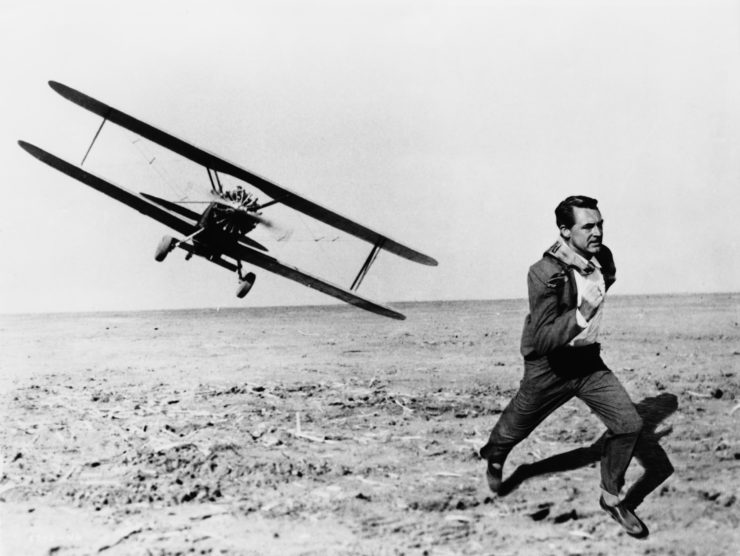
Peacock feathers are off limits to the plumassier, unless he can find vintage ones.
It was John Steinbeck’s birthday this week, and I came across this quote by him: “Remember that the most beautiful things in the world are the most useless; peacocks and lilies for instance.” That made me think of the haute couture “plumassier” in the post below. He spends his days creating incredibly expensive fashion from feathers that some may argue are the epitome of useless beauty. And I suppose some may argue that literary journalism is the peacock of news writing, beautiful but not as “useful” as breaking news in today’s speeded-up news cycle. I say we need all the beauty we can get in our lives. We need things that move us, that awe us. Like the peacock above. And the stories below.

Kanye West and Kim Kardashian, who is wearing Eric Charles-Donatien's feathers, arrive at The Metropolitan Museum of Art's Costume Institute benefit gala in 2015.
The thing with feathers: Burkhard Bilger and his haute couture “plumassier.” I’m not sure what delighted me more: the New Yorker story by Bilger, the loose and lovely questions by contributor Julia Shipley in the annotation of the piece, or the fact that I got to run a photo of Kim Kardashian’s famous posterior as the main illustration for the piece. Here’s a nice bit about how Bilger came up with his lede: “I tried about 20 versions of this lede. I knew that I wanted to sound a larger theme right away — to let the reader know that this piece was about more than fashion or featherwork. But I had a hard time finding the right balance. Some versions were too flashy (and biologically dubious): ;Beauty is for suckers. It’s a sleight of hand, a bait and switch, a flash of powder as your pocket’s being picked.’ Others too flat:’“Even stuffed, it was a spectacular bird.’ I liked the final version because it got at the nub of the problem — why do we dress up in these wacky ways that make no practical sense? — without giving too much away.”
The soundtrack: “Feather in Your Cap,” by Beck. Am I the only one who hears a bit of James Taylor’s “Fire and Rain” in this song? It took me a while to love Beck. “Loser” set my teeth on edge. But his versatility is beautiful to see.
One Great Sentence
“I returned, and saw under the sun, that the race is not to the swift, not the battle to the strong, neither yet bread to the wise, nor yet riches to men of understanding, nor yet favour to men of skill; but time and chance happeneth to them all.”
Ecclesiastes 9:11, King James Version. Read why we think it’s great.

The famous scene in which actor Cary Grant is pursued by a crop duster in the Hitchcock film “North by Northwest” contains no dialogue, but screenwriter Ernest Lehman described every moment of the nearly 10-minute scene. Attention to cinematic detail is crucial in screenwriting, which makes journalism a perfect training ground for film
What journalists need to know about writing screenplays. As this piece by Ricki Morell says, “With a number of this year’s Oscar nominees and other critically acclaimed films based on real events, journalists may dream of transforming their work into feature films. But even those who have succeeded in Hollywood say writers steeped in the art of reporting must be ready to make adjustments—in everything from their conception of narrative to their understanding of the difference between nonfiction and cinematic truth.” It cites screenwriting guru Syd Field: “I learned that most of the scripts that read well—meaning they featured lovely sentences, stylish and literate prose and beautiful dialogue – usually didn’t work. While they might read like liquid honey flowing across the page, the overall feeling was that of reading a short story or a strong journalistic piece in a magazine like Vanity Fair or Esquire. But that’s not what makes a good screenplay.”
The soundtrack: “Screenwriter’s Blues,” by Soul Coughing. Like Beck, this band came out of the ’90s. You could kind of call this jazz rap, with some very good storytelling. Here’s a lyric that’s a bit chilling, given the Parkland shooting: “Gone savage for teenagers with automatic weapons and boundless love/Gone savage for teenagers who are aesthetically pleasing/In other words, fly/Los Angeles beckons/The teenagers/To come to her/On buses/Los Angeles loves love.”
What I’m reading online: For Asian Americans, the 2018 Winter Olympics brought unexpected joy and familiar anger, by Frank Shyong. I’d like to thank my old LA Times friend and workmate Shelby Grad for pointing out this column by one of the new generation of born storytellers. And I agree with Shelby on two great passages: “It feels ridiculous that I see myself in these highly disciplined and supremely athletic Asian Americans, especially given how much barbecue I ate last Saturday. But there’s something undeniably familiar in their stories — their families.” And, especially: “Their stories reminded me of how my parents rarely verbalize their love — rather, they submerge me in it. In place of words, they offer a blind and bottomless sacrifice. It is a debt that I don’t always know how to repay.”
Searching for the Woman Who Saved My Immigrant Family From Homelessness, by Shaheen Pasha. And I’d like to thank my Nieman Foundation friend and workmate Jan Gardner for pointing out this poignant story by a Visiting Nieman Fellow. When Pasha was a little girl, a woman her family didn’t even know took them in, nothing sought in return. Ever since, Pasha has kept thinking about the woman, and finally went looking for her. As the dek hed says in this deeply personal piece, which ran in Narratively: In this time of Islamophobia and hatred, I needed to understand what made a white stranger open her home to us.
Midwinter Hotel, by Henry Freedland. This one wins the prize for story of the week, just for the sheer audacity of it. In a feat that brings to mind David Foster Wallace, both for the imagination involved and the footnotes, Freedland wrote a story made up solely of sentences from the past 10 years of Lapham’s Quarterly. You know how I mentioned how we all need some awe in our lives? This one is awesome in the literal sense. Just thinking of the research involved makes my head spin. And it all holds together amazingly well.
 What’s on my bedside table: “Corduroy,” by Adrian Bell. For years I’ve been looking for a vintage Penguin copy of this book, considered a classic of the rural living canon. Bell was a journalist who became a farmer, and I wanted to love this book. But so far it’s not clicking with me. It’s not wry enough, somehow. And the paper in this copy is tissue thin; I quickly realized it must have been a World War II-era printing, when they were economizing on paper. Yep: 1944.
What’s on my bedside table: “Corduroy,” by Adrian Bell. For years I’ve been looking for a vintage Penguin copy of this book, considered a classic of the rural living canon. Bell was a journalist who became a farmer, and I wanted to love this book. But so far it’s not clicking with me. It’s not wry enough, somehow. And the paper in this copy is tissue thin; I quickly realized it must have been a World War II-era printing, when they were economizing on paper. Yep: 1944.
 What’s on my turntable: “Sweet and Easy,” by the Oscar Peterson Trio. I’ve been a bit shocked by the high prices of used vinyl in London, but have recently found a guy at the local vintage market who sells them for a pound each (or six for five pounds — of course I go for that). That means I got this album for not much more than a dollar. And I got to hear one of the most gifted jazz pianists ever play the beautiful Serenade in Blue.(Love the instructions on the back: This stereo sound can be played on mono reproducers provided a compatible or stereo cartridge for mono is fitted. If in doubt, consult your dealer.)
What’s on my turntable: “Sweet and Easy,” by the Oscar Peterson Trio. I’ve been a bit shocked by the high prices of used vinyl in London, but have recently found a guy at the local vintage market who sells them for a pound each (or six for five pounds — of course I go for that). That means I got this album for not much more than a dollar. And I got to hear one of the most gifted jazz pianists ever play the beautiful Serenade in Blue.(Love the instructions on the back: This stereo sound can be played on mono reproducers provided a compatible or stereo cartridge for mono is fitted. If in doubt, consult your dealer.)
If you want to chat about storytelling (or music), I’m Storyboard editor Kari Howard, and you can reach me at editor@niemanstoryboard.org. Or you can find me at @karihow on Twitter.


